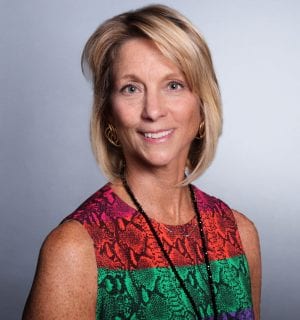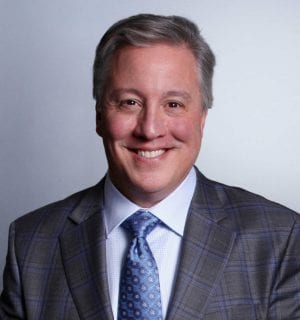News and Insights
Navigating the Multigenerational Healthcare Landscape
October 24, 2024
In our world of hyper-connectivity and multichannel access to information, communication is the bridge that connects healers with those seeking to be healed. However, with boomers becoming seniors and millennials stepping into leadership roles, delivering quality healthcare and ensuring patient engagement becomes more challenging. Health communicators, as the crucial link in this process, must now adapt how consumers, from tech-savvy Gen Z to the more traditional Silent Generation, access information and relate to their providers. The health sector faces the challenge of navigating diverse communication preferences, behaviors, and expectations to communicate effectively across generations.
As we navigate the multigenerational landscape, it’s important to remember that technology is not just a tool but a powerful ally in bridging communication gaps. By understanding and leveraging people’s information and tech preferences, influenced by their peer communities, communicators can empower payers, policymakers, and providers to foster stronger engagement and improve patient outcomes. This technological bridge offers a promising future for demographic- and tech-savvy health communication.
Understanding the Multigenerational Landscape
Today’s players in the health ecosystem must reach multiple generations, each with distinct characteristics and preferences. A tailored communication approach is necessary and crucial to ensure effective engagement and life-changing action. Understanding these preferences will equip health communicators with the knowledge to effectively engage with their diverse audience.
- Baby Boomers (born 1946-1964): This generation values direct, clear communication and prefers face-to-face interactions or phone calls. They are still highly engaged with traditional media and often appreciate detailed explanations and reassurances from health professionals.
- Generation X (born 1965-1980): Pragmatic and adaptive, Gen X is comfortable using traditional and digital media. Their adaptability is a key strength in the communication process. They value efficiency and are likely to turn to online resources but appreciate personal interactions, especially when dealing with healthcare concerns.
- Millennials (born 1981-1996): Highly engaged with technology, Millennials rely on mobile apps, social media, and online platforms for information. Quick, accessible, and interactive content is their preference. According to the American Hospital Association, 65% of Millennials have used a health app or digital health tool in the past year, and 40% have had a telehealth consultation.
- Generation Z (born 1997-2012): Gen Z is highly familiar with digital environments and instant communication. They expect personalized, immediate responses and are skilled at navigating digital health tools for quick and easy access to health information.
Tailoring Communication Strategies for Multigenerational Audiences
To engage diverse generational groups, communicators must adopt a multichannel approach that caters to each generation’s unique preferences. Personalizing communication to match individual preferences, medical conditions, and behaviors through data analytics and patient segmentation is essential. Baby Boomers may appreciate personalized letters or phone calls, while Millennials and Gen Z are more likely to engage with emails or text messages. The key is delivering timely information to enhance patient satisfaction and improve health outcomes.
Strategies for Effective Communication:
- Maintain Traditional Channels for Older Generations
While digital platforms are crucial for younger audiences, Baby Boomers and Gen X may still prefer traditional methods. Providers should continue to use print materials, such as brochures and newsletters, as well as television and radio ads, to reach these groups. Participation in community events, health fairs, and local organizations can help build trust and personal connections with older generations. - Leverage Digital Platforms for Younger Generations
Millennials and Gen Z value brands that align with their personal values and lifestyle choices and are highly engaged with social media platforms such as Instagram, TikTok, and X (formerly Twitter). These platforms are ideal for sharing health-related information through engaging videos, infographics, and interactive content. Mobile apps and patient portals also can be used to deliver personalized health information, appointment reminders, and wellness tips, making healthcare more accessible to these tech-savvy groups. - Put Technology to Work
Technology plays a significant role in bridging the communication gap between generations. Telemedicine, for example, has gained popularity across all age groups by offering convenient access to healthcare services. Baby Boomers and Gen X appreciate the convenience of telemedicine, while Millennials and Gen Z embrace the digital experience. Providers should invest in user-friendly telemedicine platforms and offer clear patient instructions on using these services.
Artificial intelligence (AI), chatbots and large language models (LLMs) can enhance communication by providing instant responses to patient inquiries, scheduling appointments, and delivering personalized health information. These technologies create a seamless health experience for all generations.
- Build Trust, Build Community
Trust is a critical factor in health communication, and transparency is key. Providers and pharma companies should offer clear, concise, evidence-based information about treatment options, costs, and outcomes. This is particularly important for Millennials and Gen Z, who are more likely to trust recommendations from peers and online communities. Incorporating patient testimonials, success stories, and expert opinions can help build credibility and trust across all generations. Advocacy organizations can create solid and lasting relationships with patients by fostering open and honest communication.
A Masterclass in Messaging Starts with Listening
Whether you’re crafting messages for Baby Boomers or Gen Z, the goal is to inform, connect, inspire, and drive action. In communication, respecting and listening to each generation’s unique characteristics while delivering important messages is crucial. George Bernard Shaw famously said, “The single biggest problem in communication is the illusion that it has occurred.” Effective communication requires two-way engagement, creating channels for feedback and interaction.
For younger generations, online forums, social media, and patient portals offer platforms for dialogue, while traditional methods like surveys and focus groups can provide valuable insights from older demographics. Providers should actively encourage patient feedback, address concerns, and improve services based on each generation’s needs.
Making a Difference
Effective communication is at the hub of successful engagement with multigenerational audiences. By understanding each generation’s unique needs and preferences and employing a multichannel approach, communicators can ensure that all individuals receive the information and care they need. Bridging generational divides through thoughtful communication enhances patient satisfaction, improves health outcomes, and fosters a more inclusive environment.
In the evolving world of health, those who listen and adapt will lead the way, creating lasting connections across generations.
Originally published in O’Dwyer’s Public Relations News on October 24, 2024.

